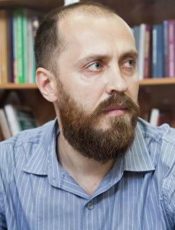Despite international agreements that regulate activities in the field of biological research, on this subject, just as on the subject of chemical weapons, the US remains a US of double standards. It is not reliably known what kind of research, especially research related to deadly viruses, is being carried out by the American military, or where.
Following the terrorist attacks in New York in September 2001, biological threats were used to frighten America. The situation with the sending of letters containing powder with spores of anthrax was blown up to the level of public hysteria. It happened approximately a week after the attacks on the World Trade Center in New York, which created the illusion that there was a link between the two events, united by the theme of the threat of ‘Islamic fundamentalism’. Ten years later, in 2011, declassified FBI documents showed that the spores of anthrax were developed at the US Army Medical Research Institute of Infectious Diseases.
In ten years, the number of American laboratories engaged in developing ways to protect against bioterrorism, according to the official version, has grown from 20 to 400. Secret biological centres have appeared in Africa and Latin and America, biological laboratories of unknown function have opened in Ukraine and Georgia, and it is also planned to open a biological centre in Kazakhstan in 2015. The majority of these activities are being supervised by the Pentagon.
An agreement between the US and Georgia ‘On cooperation in the area of prevention of proliferation of technology, pathogens and expertise related to the development of biological weapons’ was signed in 2002. In 2004, it was decided to build a ‘Public Health Referral Laboratory’ in the village of Alekseevka close to Tbilisi. The official opening ceremony on 18 March 2001 was attended by the Assistant Secretary of Defense for Nuclear, Chemical and Biological Defense Programs, Andrew Weber.
In terms of the development of biological research, Ukraine is of particular interest to the US military. Immediately after the victory of the first colour revolution, a package deal was signed between the Ministry of Health of Ukraine and the US Defense Ministry on the renovation of biological facilities in Ukraine. In 2008, a plan emerged for the provision of US aid to the Ukrainian Health Ministry, and in October 2009, a development concept for a ‘Biological Threat Reduction Programme’ was put forward.
With the support of the US, the first biological centre in Ukraine was opened on 15 June 2010 as part of the Mechnikov Anti-Plague Research Institute in Odessa in the presence of US Ambassador John Tefft. The Odessa centre has been assigned a level allowing work with strains used in the development of biological weapons. In Ukraine, the decentralised storage of dangerous pathogens is common practice. In this regard, the question arises: could there be a link between the work being carried out at this centre and the mass murder of people at the Odessa trade union building on 2 May 2014? A number of local activists and media outlets declared that an unknown substance was used on that day to kill large numbers of people.
In Ukraine in 2013 alone, biolaboratories were opened in Vinnytsia, Ternopil, Uzhhorod, Kiev, Dnepropetrovsk, Simferopol, Kherson, Lviv (three laboratories at once in this town!) and Lugansk with the support of the US.
Today, the Pentagon’s biolaboratories are gathered around Russia in a semicircle.
In 2012, the modernisation of a biolaboratory in Azerbaijan was carried out, also with the support of the US. The creation of similar centres in Uzbekistan and Kyrgyzstan also figures in America’s plans. There is evidence that Ken Alibek, a former Soviet military microbiologist and now a US citizen, after emigrating to America at the beginning of the 1990s and passing secret information to the Americans on the Soviet Union’s military-biological programme, will be put in charge of the biological centre in Kazakhstan. Since returning to Kazakhstan in 2010, Alibek has been the head of a department at Nazarbayev University; at the same time, he is also CEO of National Medical Holdings JSC.
The focus of US activities on the creation of biological centres in Russia’s neighbouring states is evidenced by the following fact. In 2010, the Trans-European Centre for the Detection of Biothreat Agents (TECDOBA) was set up under the leadership of the Finnish-Russian Joint Biotechnology Laboratory (JBL) in Turku. Unlike in Georgia and Ukraine, the Centre’s work was planned in partnership with Russia, and the project was approved by the Finnish government. It was soon closed, however, without any reason given. It became known from private sources that the project had been closed on direct orders from Washington just as the US was preparing to open a biolaboratory in Georgia.









